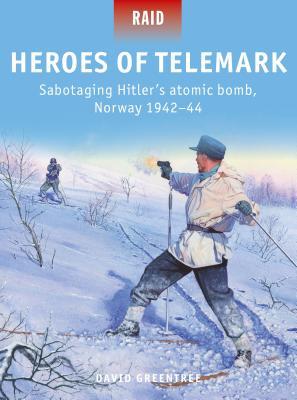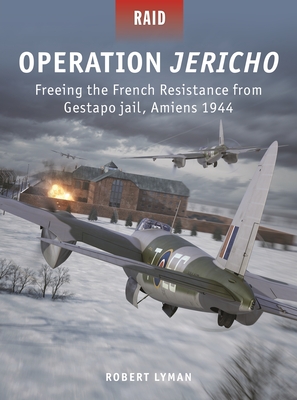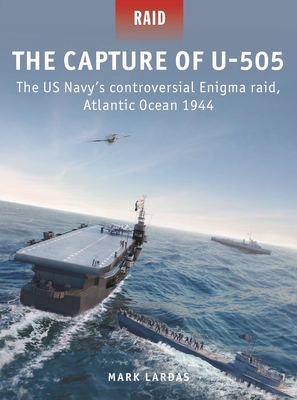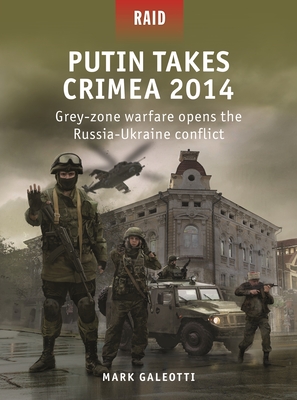


Books in series

Rangers Lead the Way
Pointe-du-Hoc D-Day 1944
2009

Israel's Lightning Strike
2009

The Cabanatuan Prison Raid
The Philippines 1945
2009

Who Dares Wins
2009

The Great Locomotive Chase
The Andrews Raid 1862
2009

The Samurai Capture a King
Okinawa 1609
2009

The Blocking of Zeebrugge
Operation Z-O 1918
2010

The Cockleshell Raid
Bordeaux 1942
2010

Rescuing Mussolini
Gran Sasso 1943
2010

Certain Death in Sierra Leone
2010

Pegasus Bridge
Bénouville D-Day 1944
2010

Roughshod Through Dixie
2006

The Bruneval Raid
2006

The Los Banos Prison Camp Raid
The Philippines 1945
2006

A Far-Flung Gamble
Havana 1762
2006

Dambusters - Operation Chastise 1943
2006

The Great Expedition
Sir Francis Drake on the Spanish Main 1585-86
2011

The Zeppelin Base Raids
Germany 1914
2011

Storming Flight 181
GSG 9 and the Mogadishu Hijack 1977
2011

The Great Chevauchee - John of Gaunt's Raid on France 1373
2011

Operation Archery
The Commandos and the Vaagso Raid 1941
2011

Decatur's Bold and Daring Act - The Philadelphia in Tripoli 1804
2011

The Revenge of the 47 Ronin - Edo 1703
2011

The Last Boarding Party
2011

Ride Around Missouri - Shelby's Great Raid 1863
2011

Tora! Tora! Tora!
2011

Tomahawk and Musket
2012

Run The Gauntlet
2012

The Hunt for Pancho Villa
The Columbus Raid and Pershing’s Punitive Expedition 1916–17
2012

Red Christmas
2012

Gothic Serpent
2012

Knight's Move
2012

U-47 in Scapa Flow
The Sinking of HMS Royal Oak 1939
2015

Oldest Allies
Alcantara 1809
2012

The Last Ride of the James-Younger Gang
Jesse James and the Northfield Raid 1876
2012

Avenging Angel
2012

Blackbeard's Last Fight
2013

The Fall of Eben Emael
2013

Takur Ghar
2013

Kill Hitler
2013

Tombstone
2013

The Swamp Fox
Francis Marion's Campaign in the Carolinas 1780
2013

Kill Rommel!
2014

Carlson's Marine Raiders - Makin Island 1942
2014

Killing Bin Laden
Operation Neptune Spear 2011
2013

Montcalm's Crushing Blow
French and Indian Raids along New York's Oswego River 1756
2014

Behind Soviet Lines
Hitler's Brandenburgers capture the Maikop Oilfields 1942
2014

Storming Monte La Difensa - The First Special Service Force at the Winter Line, Italy 1943
2015

Stirling's Desert Triumph
The SAS Egyptian Airfield Raids 1942
2015

Heroes of Telemark
Sabotaging Hitler's atomic bomb, Norway 1942–44
2018

Tirpitz in Norway
X-craft Midget Submarines Raid the Fjords, Operation Source 1943
2019

Operation Jericho
Freeing the French Resistance From Gestapo Jail, Amiens 1944
2022

The Capture of U-505
The US Navy's Controversial Enigma Raid, Atlantic Ocean 1944
2022

Putin Takes Crimea 2014
Grey-zone Warfare Opens the Russia-Ukraine Conflict
2023
Authors
Librarian Note: There is more than one author by this name in the Goodreads database. David R. Higgins attended the Columbus College of Art & Design, and received a BFA from Ohio State University and an MISM from Keller. In addition to 'The Roer River Battles' and 'King Tiger vs. IS-2: Operation Solstice 1945' he has written over 40 articles for magazines such as 'Strategy and Tactics', 'Armchair General', 'Modern War' and 'World at War', as well as MCS Group's 'States of Conflict'. He lives in Columbus, Ohio.


Steven Zaloga is an author and defense analyst known worldwide for his articles and publications on military technology. He has written over a hundred books on military technology and military history, including “Armored Thunderbolt: The US Army Sherman in World War II”, one of the most highly regarded histories of the Sherman Tank. His books have been translated into Japanese, German, Polish, Czech, Romanian, and Russian. He was a special correspondent for Jane’s Intelligence Review and is on the executive board of the Journal of Slavic Military Studies and the New York Military Affairs Symposium. From 1987 through 1992, he was the writer/producer for Video Ordnance Inc., preparing their TV series Firepower. He holds a BA in history from Union College and an MA in history from Columbia University. Mr. Zaloga is also a noted scale armor modeler and is a host/moderator of the World War II Allied Discussion group at Missing-Lynx.com, a modelling website. He is a frequent contributor to the UK-based modeling magazine Military Modelling. He is a member of the Armor Modeling and Preservation Society.

Dr. David C. Nicolle (born 4 April 1944) is a British historian specialising in the military history of the Middle Ages, with a particular interest in the Middle East. David Nicolle worked for BBC Arabic before getting his MA at SOAS, University of London. He gained a PHD at the University of Edinburgh. He lectured in World and Islamic art and architecture at Yarmouk University, Jordan. He was also on the editorial board of the Medieval History Magazine.




Gordon L Rottman served for 26 years in the US Army in Special Forces, airborne infantry, long-range reconnaissance patrol, and military intelligence assignments in the Regular Army, Army National Guard, and Army Reserve. He has worked as a Special Operations Forces scenario writer for 14 years at the Army' s Joint Readiness Training Center, Fort Polk, Louisiana where he developed training exercises for Special Forces. Gordon began writing military history books in 1984 and is currently a full-time author. He has written 50 books for Osprey.He is married with four children and lives in Cypress, Texas.

By birth a New Zealander, I was educated in Australia and at the Royal Military Academy Sandhurst. After a 20-year career in the British Army I turned my hand to writing, my PhD being published in 2004 as 'Slim, Master of War, a military biography of arguably Britain's greatest field commander of WW2. I am a Fellow of the Royal Historical Society. I am a trustee of the Kohima Educational Trust, which seeks to provide educational opportunities for young learners in Nagaland.
Stephen Prince teaches film history, criticism, and theory at Virginia Tech’s School of Performing Arts . He received his Ph.D from the Annenberg School of Communication at the University of Pennsylvania. Librarian’s note: There is more than one author in the Goodreads database with this name.